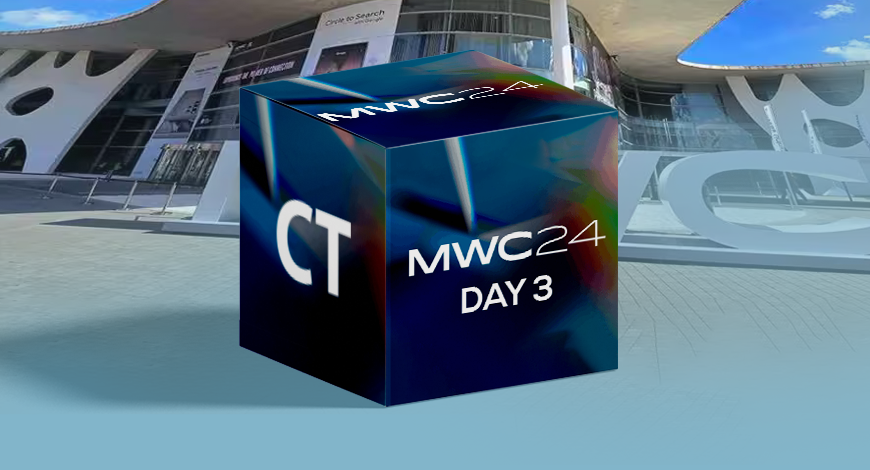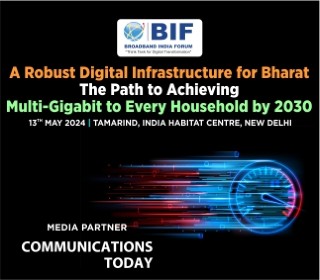International Circuit
MWC 2024 -Day Three

The mood at Mobile World Congress this year has been sort of despondent. Vendors seem busy, visitors are flocking, conferences are happening, and yet there is an underlying quiet melancholy about it. And only one reason comes to mind, 5G not talking off as expected. One of the chief concerns for operators and vendors is getting a return on their huge investment in 5G networks.
Discussions are centred around identifying, creating and delivering profitable services. How do technologies such as AI, Open RAN, 6G and APIs lead to a better business proposition for telcos?
Industry expects consolidation and jobs will be lost-The industry is expecting a shrink. Past events support this. Ericsson and Nokia are cutting up to 22,500 jobs between them. Separately, AT&T, T-Mobile and Verizon cut about 8% of their combined workforce last year.
However, there is plenty happening. While AI dominated, Application programming interfaces (APIs) into operator networks promise to create new revenue streams. FWA is widely viewed as the first major new service to spring from 5G technology.
NOW Telecom has become the latest operator to sign a 5G Open RAN deal with Rakuten Symphony, while in Malaysia CelcomDigi and U Mobile are collaborating on 5G-A. Telkomsel is integrating gen AI from Google Cloud, IOH has partnered with NVIDIA to pursue its AI goals, and Orange and Tencent are driving innovation in Africa
5G NTN. As 5G continues to evolve, The telecom industry is setting its sights on a new frontier: achieving global service ubiquity through a combination of cellular terrestrial networks and space-based, non-terrestrial networks.
Qualcomm and MediaTek chipsets were on display, enabling 5G Non-Terrestrial Networks demonstrations of both the NB-IoT, 5G and 5G-Advanced variety. Ceva and Arm are working on 5G NTN chip development. European Space Agency and GSMA Foundry announced a partnership that includes up to 15 million euros in funding for tech challenges related to NTN, lab access, and a GSMA training course.
The focus of the Show has widened. T&M vendors were a busy lot, as were the chipset companies. So was the enterprise network industry. Because all of those cloud functions and programming interfaces, and the internal change programmes, the enterprise industry sees increasing relevance. Halls 3 and 4 are all about the consultancy firms, cloud hyperscalers, and system integrators.
GSMA used the third day to release, The Mobile Economy 2024 report. According to the GSMA, the key drivers for opportunities in the industry will include developments in 5G SA, 5G-Advanced, enterprise internet of things (IoT) and AI, the GSMA’s Open Gateway initiative and new revenue potential through the Billing and Charging Evolution (BCE) standard.
https://www.communicationstoday.co.in/the-mobile-economy-2024-gsma/
Generative AI. China has been an important spur for global economic growth, first powered by its manufacturing exports and more recently by its tech companies. Within the decade, Huawei has been gradually expanding overseas. In the heated competition to develop AGI, or artificial general intelligence, the two main contenders have been China and the United States. While the U.S. is still in a leading position, China has also developed many large model applications in areas like enterprise services. iFLYTEK has begun to promote AGI-based products globally. The company has introduced an array of applications driven by generative AI and deep learning, including enterprise services, intelligent marketing and smart living environments.
Philippine telco NOW Telecom signed a Memorandum of Understanding (MoU) with Rakuten Symphony to establish a collaborative framework for deploying a 5G Open RAN pilot in the Philippines. Rakuten Symphony and NOW will collaborate with the aim of developing disaggregated networks and open interfaces for the pilot. Both companies will contribute expertise, resources, and technology to jointly develop 5G and related ICT solutions for NOW Telecom’s network.
AT&T. Chris Sambar, Head of Network, AT&T elaborated on their focus for the year.
https://www.communicationstoday.co.in/our-network-is-open-ran-for-business-says-att/
Huawei hosted the Huawei Industrial Digital and Intelligent Transformation Summit. The vendor launched ten industrial digital and intelligent transformation solutions, and a series of new flagship products, to meet the needs of customers at different stages of industrial transformation. For large-scale industrial customers with diversified services and complex scenarios, Huawei launched ten industrial digital and intelligent, including National Cloud Solution 2.0, Smart City, Smart Classroom 3.0, Medical Technology Digitalization, Digital CORE, Intelligent Factory, Smart Airport Fully Connected Fiber Network, Perimeter Security with Fiber Sensing, Smart Railway Perimeter Detection, ITS 2.0, Intelligent Power Distribution (IDS), Oil and Gas Pipeline Safety Management Solutions. In addition, Huawei released several product portfolios, including the Campus Digital Platform, Multilayer Ransomware Protection (MRP) 2.0, and Perimeter Protection Site.
For the small and micro-sized customers with simple scenarios, Huawei launched the HUAWEI eKit brand in 2023. In addition, Huawei launched new flagship products in data communications, optical network, data storage, and lightweight converged O&M.
CT Bureau















You must be logged in to post a comment Login